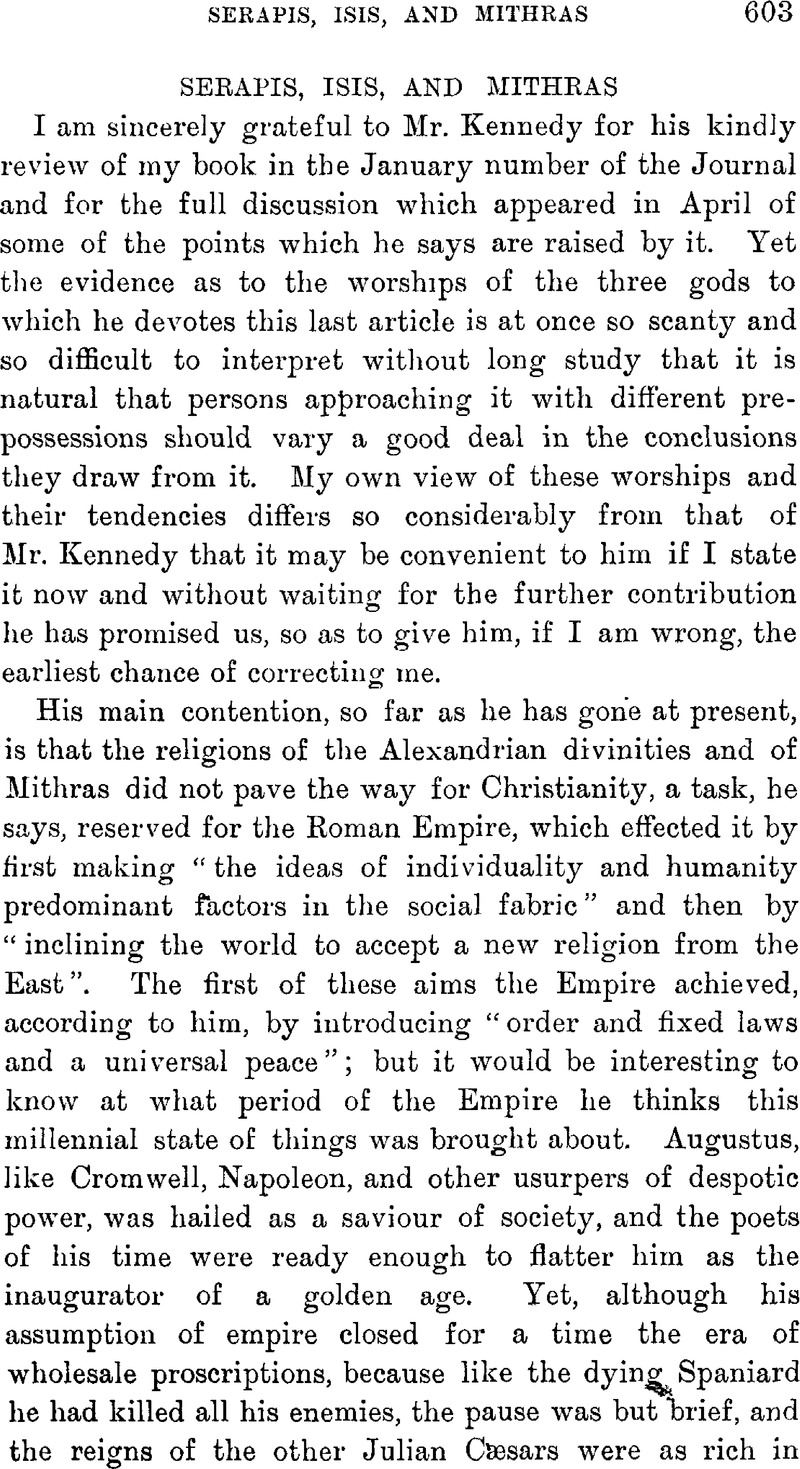No CrossRef data available.

page 604 note 1 Some admirers of Marcus Aurelius' Meditations have asserted that the human race was never so happy as under the peaceful government of the Antonmes. They forget the terrible war against the German Marcomanni and Quadi, the fighting on the Persian frontier, and the rebellion of Avidius Cassius.
page 605 note 1 A desire to return to a republican form of government was much in evidence after the murder of Caligula.
page 606 note 1 Olymp. 14, 21.Google Scholar So Plato, , Phileb. 256Google Scholar, Legg. 931b. Cf. Weinreich, O. in Athenische Mitteilungen, 1912, pp. 1–68Google Scholar, where the epithet is discussed with reference to the ex voto representation of an ear to which it is often, appended.
page 606 note 2 “Les Dieux Tout Puissants Cybèle et Attis”: Rev. Arch., 1904, pp. 324, 325.Google Scholar
page 606 note 3 Tacitus, , Ann. ii, 85Google Scholar, probably reduces the affair to its true proportions when he says that an attempt was made to suppress the Egyptian and Jewish superstitions by transporting those addicted to them to Sardmia.
page 607 note 1 The measure of the Christians' fear of the rivalry of the Isiac and Mithraic religions is given by their savage destruction of the temples of Mithras under Gratian and of Serapis under Theodosius and their jubilation over the results. Oderint dum metuant.
page 607 note 2 Cumont, , Myst. de Mithra, 1913, p. 86Google Scholar; Graillot, , op. cit., pp. 343, 344.Google Scholar Yet the Mithraists had a baptism of water for the remission of sins which was apparently given to every initiate. See Forerunners, ii, p. 260Google Scholar, n. 5, for authorities.
page 608 note 1 Not the “Mithræ mysteriorum antistites”, but οἱ τ το![]() Μθρον μνστρια παραδδοντες. Justin's text is given in Cumont, Textes et Monuments, ii, p. 20.
Μθρον μνστρια παραδδοντες. Justin's text is given in Cumont, Textes et Monuments, ii, p. 20.
page 608 note 2 See Forerunners, ii, pp. 240, 241, 244, 247.Google Scholar
page 609 note 1 “The Greek Worship of Serapis and Isis”: PSBA. 1914, pp. 68–79.Google Scholar One need hardly, however, go beyond the votive inscription of Arrius Balbinus, “Thou the one who art all things,” quoted by Mr. Kennedy.
page 610 note 1 JRAS. 1917, p. 166.Google Scholar